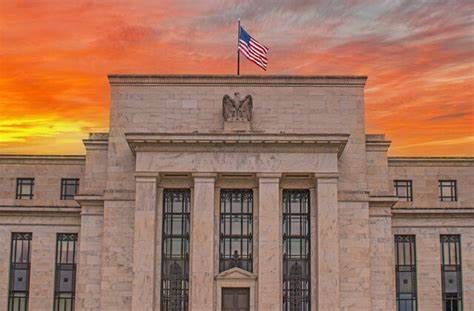As the Federal Reserve gears up for its upcoming meeting, a recent survey of academic economists indicates that the central bank is likely to implement only one interest rate cut in 2024. This survey, conducted in the final week of May and reported by the Financial Times, involved 39 academic economists, with over half predicting a single quarter-point reduction this year. Additionally, nearly a quarter of the economists surveyed forecast no rate cuts at all.
Persistent inflation has become a significant factor in shaping expectations for the Fed’s actions. Despite the hopes for a series of rate cuts, the enduring high inflation rates have led many to believe that the Federal Reserve will maintain elevated interest rates for a longer period. This expectation comes just ahead of a crucial Fed meeting on Wednesday, where policymakers are anticipated to revise their predictions for rate cuts this year from three to two or fewer. Compounding the issue, the U.S. Bureau of Labor Statistics is set to release its consumer price index data for May on the same day, adding another layer of complexity to the Fed’s decision-making process.
The ongoing high borrowing costs could pose a substantial challenge for President Joe Biden, especially with the upcoming November U.S. election. Economic concerns have been a significant factor in his low approval ratings, and the persistence of high prices, despite other positive economic indicators, continues to weigh heavily on public sentiment. Most other measures suggest that the economy is healthy: unemployment remains low, hiring is robust, and consumers are traveling, eating out, and spending on entertainment. Yet, polls show that the cumulative price increases are a continuing source of public discontent and a political threat to Biden’s re-election bid. Economists have also adjusted their forecasts for consumer price expenditures inflation from 2.5% in March to 2.8%, with the Fed’s target still firmly set at 2%.
The Federal Reserve’s decision-making process has been under intense scrutiny, and the forthcoming meeting is no exception. The central bank has maintained its key rate at a 23-year high of 5.25%-5.5%, a decision that reflects its ongoing battle against inflation. Fed officials believe that the strong job market allows them to sustain these high rates. Karen Dynan, a Harvard University professor and one of the poll respondents, noted that recent data has heightened concerns about higher-than-target inflation becoming entrenched, necessitating a cautious approach from the Fed.
Amid these economic dynamics, there is a growing optimism among economists regarding a soft landing for the U.S. economy. The survey revealed that 52% of respondents do not anticipate a recession until 2026 or beyond, indicating a shift towards a more positive outlook. Furthermore, a third of the economists surveyed believe that the Fed will make its first rate cut this year in September, just before the November 5 election. Julie Smith, a professor at Lafayette College, suggested that a September move was likely, with possibly another cut following the U.S. election. However, she also pointed out that making rate changes in the autumn would be “very tricky” due to their interplay with U.S. politics and the presidential election.
The Federal Reserve’s cautious approach underscores the complexities it faces in navigating the current economic landscape. Jeff Kilburg, Founder and CEO of KKM Financial, highlighted the challenges, noting that with core inflation still far from the 2% target, the Fed requires more data before it can proceed with rate cuts. Kilburg emphasized the difficulty of the situation, stating, “As badly as they want to cut, they can’t,” which underscores the delicate balance the Fed must maintain.
In conclusion, the Federal Reserve is expected to keep the federal funds rate at 5.25%-5.5% for the seventh consecutive meeting. This decision reflects the central bank’s commitment to curbing inflation and ensuring that its targets are met before considering rate cuts. The outcomes of the Fed’s actions in the coming months will significantly influence the U.S. economy and the political landscape, especially as the 2024 presidential election approaches. The central bank’s cautious and measured approach aims to balance the need to control inflation without pushing the economy into a recession, a task that requires careful consideration of a multitude of economic indicators and conditions.
